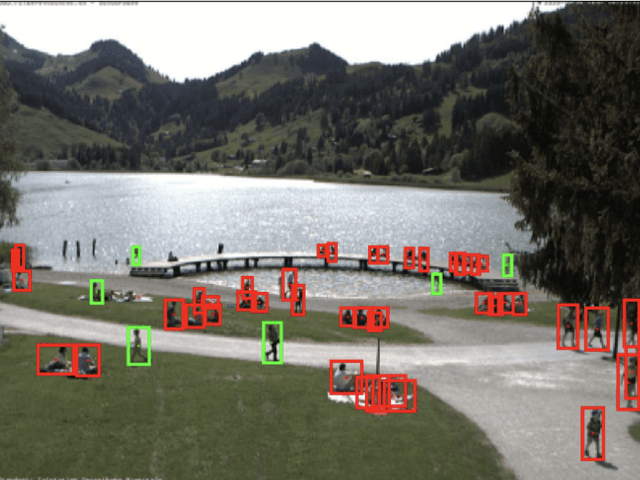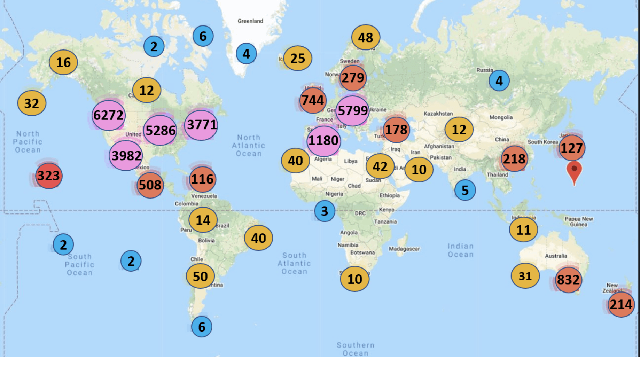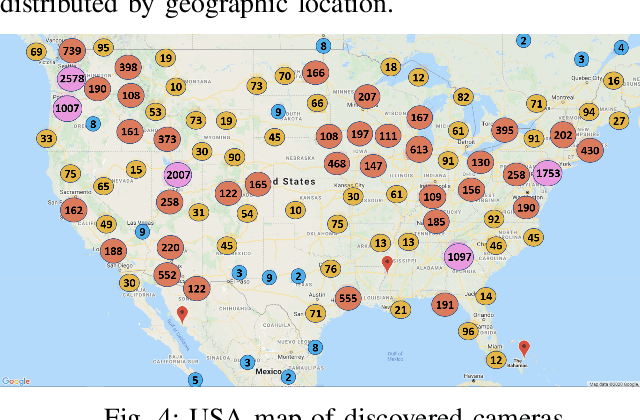Isha Ghodgaonkar
Analyzing Worldwide Social Distancing through Large-Scale Computer Vision
Aug 27, 2020



Abstract:In order to contain the COVID-19 pandemic, countries around the world have introduced social distancing guidelines as public health interventions to reduce the spread of the disease. However, monitoring the efficacy of these guidelines at a large scale (nationwide or worldwide) is difficult. To make matters worse, traditional observational methods such as in-person reporting is dangerous because observers may risk infection. A better solution is to observe activities through network cameras; this approach is scalable and observers can stay in safe locations. This research team has created methods that can discover thousands of network cameras worldwide, retrieve data from the cameras, analyze the data, and report the sizes of crowds as different countries issued and lifted restrictions (also called ''lockdown''). We discover 11,140 network cameras that provide real-time data and we present the results across 15 countries. We collect data from these cameras beginning April 2020 at approximately 0.5TB per week. After analyzing 10,424,459 images from still image cameras and frames extracted periodically from video, the data reveals that the residents in some countries exhibited more activity (judged by numbers of people and vehicles) after the restrictions were lifted. In other countries, the amounts of activities showed no obvious changes during the restrictions and after the restrictions were lifted. The data further reveals whether people stay ''social distancing'', at least 6 feet apart. This study discerns whether social distancing is being followed in several types of locations and geographical locations worldwide and serve as an early indicator whether another wave of infections is likely to occur soon.
Low-Power Object Counting with Hierarchical Neural Networks
Jul 02, 2020



Abstract:Deep Neural Networks (DNNs) can achieve state-of-the-art accuracy in many computer vision tasks, such as object counting. Object counting takes two inputs: an image and an object query and reports the number of occurrences of the queried object. To achieve high accuracy on such tasks, DNNs require billions of operations, making them difficult to deploy on resource-constrained, low-power devices. Prior work shows that a significant number of DNN operations are redundant and can be eliminated without affecting the accuracy. To reduce these redundancies, we propose a hierarchical DNN architecture for object counting. This architecture uses a Region Proposal Network (RPN) to propose regions-of-interest (RoIs) that may contain the queried objects. A hierarchical classifier then efficiently finds the RoIs that actually contain the queried objects. The hierarchy contains groups of visually similar object categories. Small DNNs are used at each node of the hierarchy to classify between these groups. The RoIs are incrementally processed by the hierarchical classifier. If the object in an RoI is in the same group as the queried object, then the next DNN in the hierarchy processes the RoI further; otherwise, the RoI is discarded. By using a few small DNNs to process each image, this method reduces the memory requirement, inference time, energy consumption, and number of operations with negligible accuracy loss when compared with the existing object counters.
 Add to Chrome
Add to Chrome Add to Firefox
Add to Firefox Add to Edge
Add to Edge